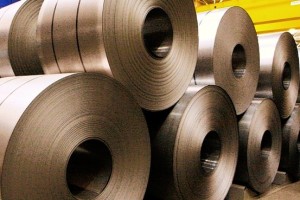Semper
aut discere, aut docere, aut scribere dulce habui.
I took
pleasure in learning, or teaching, or writing something.
Bede
"Focusing
is about saying no." Steve
Jobs
"A good idea is often surprisingly simple."
Ferdinand Alexander Porsche
"The less confident you are, the more serious you have to act."
Tara
Ploughman
"Change
breaks the brittle."
Jan
Houtema
"Short
words are best and the old words when short are best of all."
Winston Churchill
"Don't
worry about what anybody else is going to do. The best way to predict the
future is to invent it."
Alan
Kay
"Dealing
with failure is easy: Work hard to improve. Success is also easy to handle:
You've solved the wrong problem. Work hard to improve."
Alan
Perlis
"The
imagination of nature is far, far greater than the imagination of man."
Richard Feynman
"The
greatest dangers to liberty lurk in insidious encroachment by men of zeal,
well-meaning but without understanding."
Brandeis
"Modern
invention has been a great leveller. A machine may operate far more quickly
than a political or economic measure to abolish privilege and wipe out the
distinctions of class or finance."
Ivor
Brown, The Heart of England
"If
our goal is to write poetry, the only way we are likely to be any good is
to try to be as great as the best."
Donald
Hall, Poetry and Ambition
"The
public should always be wondering how it is possible to give so much for the
money."
Henry
Ford
"We
act as though comfort and luxury were the chief requirements of life, when all
that we need to make us happy is something to be enthusiastic about."
Einstein
"Many
who burnt heretics in the ordinary way of their business were otherwise
excellent people."
G. M.
Trevelyan, "Bias in History"
"We're
even wrong about which mistakes we're making."
Carl
Winfeld
"The
key to performance is elegance, not battalions of special cases."
Jon
Bentley and Doug McIlroy
"If you analyze the function of an object, it’s form often becomes obvious."
Ferdinand Alexander Porsche
"Form has to follow function."
Ferdinand Alexander Porsche
"Your
twenties are always an apprenticeship, but you don't always know what
for."
Jan
Houtema
"Keep
away from people who try to belittle your ambitions. Small people always do
that, but the really great make you feel that you, too, can become great."
Mark
Twain
"The
people can always be brought to the bidding of the leaders. That is easy. All
you have to do is tell them they are being attacked, and denounce the pacifists
for lack of patriotism, and exposing the country to greater danger."
Goering at the Nuremberg Trials
"Get
the important things right."
N. P.
Collingwood
"Most
interesting phenomena have multiple causes."
N. P.
Collingwood
"People
don't change their minds. They die, and are replaced by people with different
opinions."
Arturo
Albergati
"The
best way to do something 'lean' is to gather a tight group of people, give them
very little money, and very little time."
Bob
Klein, chief engineer of the F-14 program
© 2013 Basil M Karatzas & Karatzas Marine Advisors & Co.
No part of this blog can be reproduced by any means and under any circumstances, whatsoever, in whole or in part, without proper attribution or the consent of the copyright and trademark holders.



